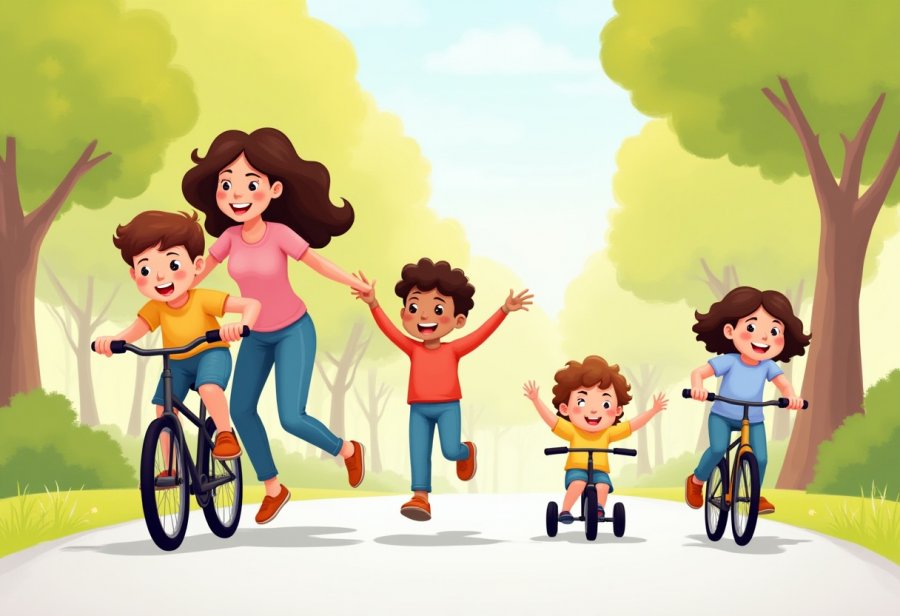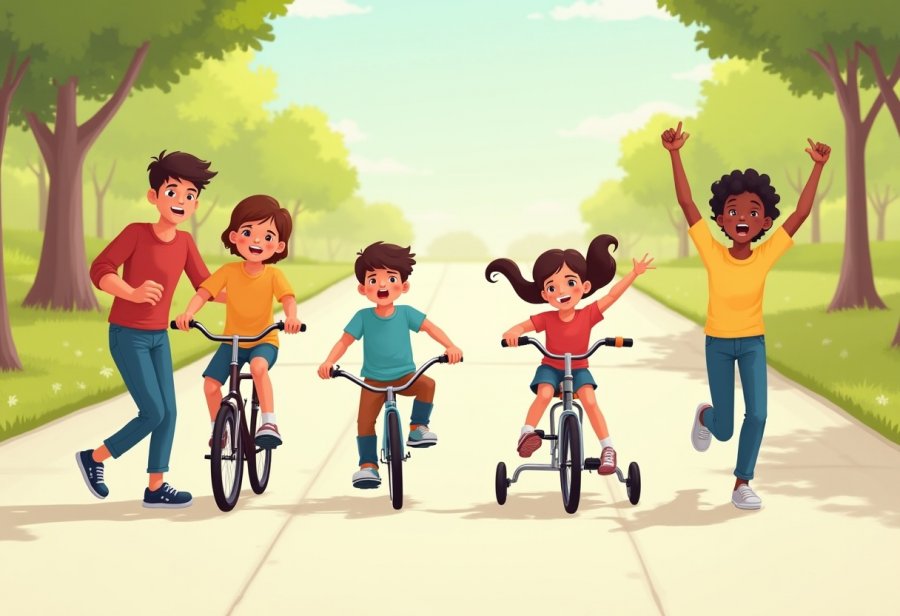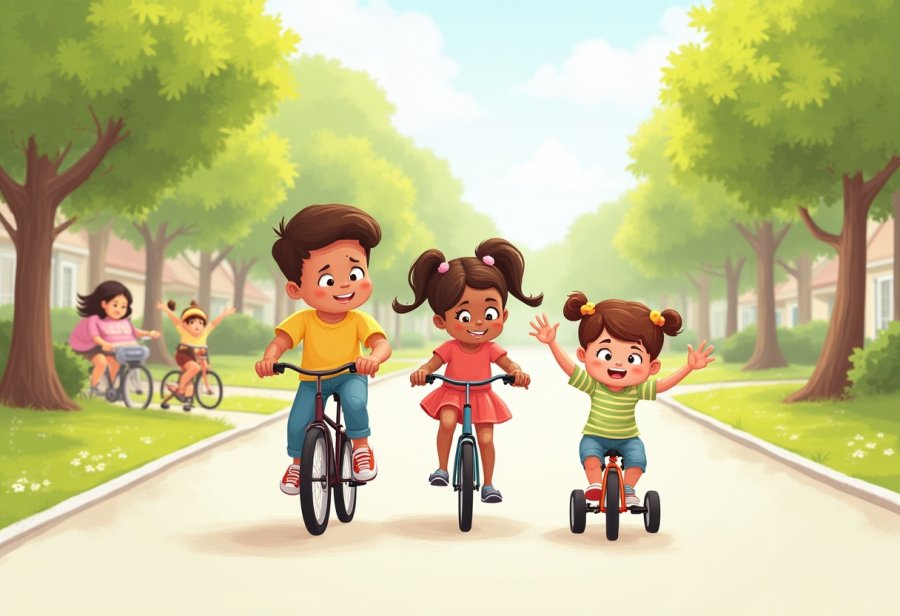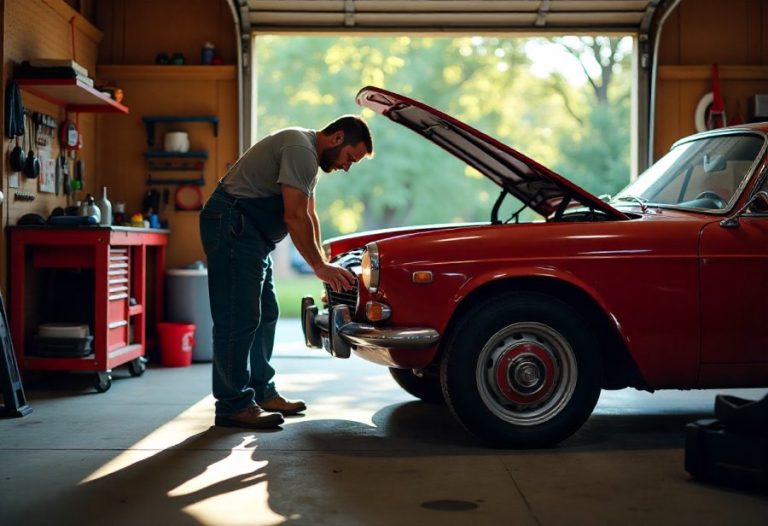
Learning to ride a bike embodies courage, independence, and the unbreakable bonds of family. As children wobble, fall, and eventually pedal confidently, they face fears and embrace resilience—lessons that extend far beyond the driveway. But does the thrill of independence outweigh the fear of falling? This journey is filled with small victories, shared tears, and proud smiles that forge lasting bonds and instill self-trust. Modern innovations like virtual reality, smart safety gear, and inclusive designs are reshaping how children learn, making rides safer and more accessible. Yet, even amid these advances, the core values of patience, support, and encouragement remain essential. So, as technology accelerates the learning process, the fundamental question persists: will these tools foster genuine confidence and resilience in every child’s pursuit of freedom on two wheels?

Celebrating Childhood Milestones: The Joy of Learning to Ride a Bike
Learning to ride a bike is a milestone that stays with families long after the first pedals turn. It’s more than just a childhood skill; it’s a moment filled with a mix of excitement, nervousness, and pride. For many kids, that first ride represents a leap into independence—a small step toward discovering their ability to navigate the world on their own. Parents often remember the mix of encouragement and patience it took to get their children to this point, making it a shared journey of growth.
This experience is also a cornerstone of family bonding. Watching a child wobble on training wheels or take tentative steps on two wheels creates moments of connection and shared achievement. Every fall is met with reassurance, every small success celebrated with cheers. These moments forge stronger bonds, built on trust, support, and the understanding that learning something new often involves a bit of struggle before success.
Beyond the physical act, learning to ride a bike teaches valuable life lessons. It’s about trusting oneself, facing fears, and embracing the possibility of failure as part of growth. The wobbling, falling, and trying again aren’t setbacks—they’re essential steps toward mastery. These experiences foster resilience and confidence, qualities that extend well beyond the driveway and into all areas of life.
Creating a positive environment is key. When children feel safe and supported, they’re more willing to take risks and push through their initial fears. Supportive family members, gentle guidance, and plenty of encouragement turn what could be a frustrating process into a joyful adventure. Celebrating small victories along the way helps children see progress, no matter how slow it seems at first.
Learning to ride is also a shared celebration of perseverance. It’s a process that often involves multiple attempts, setbacks, and small wins. Over time, kids begin to trust their bodies and their judgment, gaining independence with each ride. It’s a journey that teaches patience and grit, demonstrating that persistence pays off and that the thrill of riding a bike is worth every wobble and fall.
This milestone isn’t just about physical coordination; it’s about emotional growth. As children conquer their fears and gain confidence, they start to see themselves as capable explorers. The sense of achievement, supported by family cheers, becomes a foundation for future challenges. These moments of triumph help shape a mindset of resilience and self-belief that will serve them in many aspects of life.
In the end, learning to ride a bike captures the essence of childhood—growth, connection, and the joy of discovery. It’s a shared adventure that teaches children courage, patience, and independence, while creating memories that families cherish for years to come. It reminds us all that sometimes, the biggest leaps start with a wobble.
The Emotional and Developmental Significance of a Child’s First Bike Ride
A child’s first bike ride is a milestone filled with both excitement and emotional depth. It’s not just about balancing on two wheels; it’s a moment when children begin to trust their bodies and make independent choices. The wobbling, tentative pedaling, and occasional falls are all part of a natural learning process that helps kids understand their limits and build self-awareness. These small efforts evoke a mix of pride and nervousness, as children realize they’re starting to move more freely on their own.
Physically, learning to ride involves mastering coordination, balance, and muscle control. Balance bikes and bikes with training wheels help children focus solely on staying upright, easing the transition to pedaling and steering. As they gain confidence, support can be gradually phased out, encouraging independence without fear of falling. Every small victory—whether balancing longer or pedaling further—boosts their sense of achievement and motivates continued effort.
Emotionally, that first ride marks a leap into independence and self-reliance. Children begin to see themselves as capable explorers, capable of navigating their environment on their own. This sense of autonomy often brings pride, excitement, and a hint of nervousness. Supporting children through these feelings is crucial—reassurance from parents and siblings helps them process fears and celebrate successes. When encouragement is steady, children are more willing to push past setbacks and embrace the learning process with enthusiasm.
Fears of falling or losing control are common at this stage, and many kids worry about getting hurt or feeling embarrassed. Recognizing these concerns as normal helps parents approach the situation with patience. By framing falls as a natural part of learning and emphasizing safety, children become more willing to take risks. When they understand that mistakes are part of growth, they develop a resilient mindset that turns setbacks into valuable lessons.
Family support plays a vital role in shaping this experience. Cheerful encouragement, gentle guidance, and celebrating small wins create a secure environment where kids feel safe to experiment. These shared moments of effort and success deepen emotional bonds and turn what could be a frustrating process into a joyful adventure. This support helps children develop trust in themselves and in those around them, fostering resilience and perseverance.
The emotional impact of mastering the first bike ride extends well beyond the physical act. It builds confidence and trust in oneself, opening the door to new challenges. Kids learn that setbacks are temporary and that persistence leads to success. These lessons in resilience and independence form a foundation that influences their attitude toward future hurdles—whether academic, social, or personal.
Ultimately, that first bike ride is more than just a physical achievement. It’s a powerful emotional milestone that shapes a child’s outlook on growth and independence. With patience and support, children learn to face fears, embrace their capabilities, and enjoy the freedom that comes with riding. Every wobble and fall becomes part of a larger story—one of courage, perseverance, and the joy of discovering their own strength.

Essential Tips for Teaching Kids to Ride: Practical Strategies for Success
Teaching a child to ride a bike starts with selecting the right equipment. A lightweight, well-fitting bike designed for their age and size makes a big difference in building confidence. When kids can comfortably reach the handlebars and pedals, they feel more in control and less overwhelmed. Safety gear, like a properly fitted helmet and knee and elbow pads, isn’t just about protection—it also offers reassurance, encouraging kids to try without fear. Feeling secure in their gear helps them focus on learning and enjoying the process.
Creating a safe, distraction-free environment is essential. Practice areas such as quiet parks, paved driveways, or grassy fields allow children to focus on their skills without the dangers of traffic or uneven surfaces. An adult’s presence provides reassurance and guidance without hovering, giving kids space to experiment at their own pace. Using cones or markers to define boundaries can help children understand where to ride and stay focused on their progress, making each session both productive and fun.
Starting with balance bikes or bikes without pedals simplifies the initial challenge—balancing on two wheels. These tools help children develop core skills without the added difficulty of pedaling or steering. As they become more comfortable balancing, support can be gradually reduced. Holding the seat or guiding the bike while they pedal encourages independence, while still providing safety. Over time, as confidence grows, children will naturally start to steer and pedal on their own, feeling more empowered with each small success.
Patience is key when supporting kids through each stage. Rushing or pressuring can increase anxiety and hinder progress. Celebrate every effort, whether it’s a longer balance, a few extra pedals, or simply trying again after a fall. Recognizing small wins boosts motivation and keeps the experience positive. Short, regular practice sessions prevent fatigue and frustration, ensuring that riding remains an enjoyable adventure rather than a chore.
Making learning fun transforms a potentially stressful task into an engaging activity. Incorporate simple games or friendly challenges—like riding to a certain point or balancing for a few seconds longer—to keep enthusiasm high. Focus on the joy of movement and exploration, rather than just mastering the skill. When children associate riding with fun, they’re more likely to embrace it and develop a lifelong love for cycling.
Encouragement and positive reinforcement are crucial. Celebrate effort, progress, and resilience, regardless of how small the step. Whether it’s a successful pedal or just trying again after a fall, acknowledging their efforts builds confidence. A supportive atmosphere fosters a growth mindset, helping children see setbacks as part of learning rather than failures. With consistent encouragement, they’ll be more willing to take risks and enjoy every ride.
Once your child is comfortable riding independently, exploring local bike trails can be a great way to build skills and confidence further. To ensure a safe and enjoyable experience, consider learning about essential bike safety tips and guidelines, which can make every ride more secure and fun for your young cyclist. For more information, you can visit bicycle safety tips to help prepare for your family’s biking adventures.
Real-Life Stories of Perseverance and Triumph in Learning to Ride
Many parents vividly remember their own nerves as they watched their children wobble and teeter for the first time. They recall feeling a mix of pride and anxiety—pride in seeing their child try something new, and worry about potential falls or injuries. One parent shares how they stayed close, holding the bike steady and offering gentle encouragement with every wobble. Over time, those small moments of reassurance built trust, and finally, their child pedaled confidently across the driveway, beaming with pride. Stories like these highlight that patience and steady support turn a potentially frustrating experience into a joyful milestone.
Other families focus on celebrating small wins. A parent recounts how their child, after numerous attempts and falls, managed to balance a little longer each time. That tiny shift—just a few seconds of steady riding—felt like a major achievement. These moments show that progress often happens in small steps, not giant leaps. Recognizing and celebrating these incremental improvements keeps kids motivated and helps them see setbacks as part of the learning journey. When children realize they can overcome their fears step by step, their confidence naturally grows.
Kids often surprise their parents with resilience. One story involves a young girl initially terrified of falling and hesitant to ride without training wheels. With gentle encouragement, she gradually gained confidence, overcoming her fears after several gentle falls. The moment she pedaled on her own, shouting with joy, became a family highlight. These stories demonstrate that resilience is built through repeated effort and that setbacks are valuable lessons. Supportive patience helps children learn that they’re capable of more than they believed.
Many parents observe that respecting each child’s pace makes a difference. Some children take longer to feel comfortable balancing, while others need more reassurance after a fall. One mother shares how she adapted her approach—starting with balance bikes, then gradually moving to riding without support—allowing her child’s confidence to grow naturally. Watching her child’s progress at their own speed made the process less stressful and more joyful. These experiences underscore that personalized encouragement and patience foster genuine independence.
Sharing these stories reveals how the learning process deepens family bonds. Cheering from the sidelines, celebrating small victories, and being present during falls and recoveries create lasting memories. These moments aren’t just about teaching a skill—they’re about building trust, patience, and resilience within the family. The joy of overcoming challenges together transforms what might seem like setbacks into meaningful milestones that strengthen relationships.
These real-world stories remind us that every child’s journey is unique. Patience, support, and a positive attitude turn inevitable falls and frustrations into opportunities for growth. They show that learning to ride a bike isn’t just about physical coordination; it’s about fostering confidence and resilience that last a lifetime. Each wobble and fall becomes part of a bigger story—a story of courage, perseverance, and the joy of discovering their own strength, all shared with loved ones.

The Future of Learning to Ride: Innovations, Challenges, and Opportunities
The way children learn to ride bikes is evolving with exciting new technologies and innovative approaches. Balance training apps and virtual reality tools are increasingly helping kids develop coordination and confidence before they even touch a real bike. These digital experiences turn practice into a game, making it easier to overcome fear and speeding up the transition from balancing to pedaling. As these methods become more accessible, children can gain independence more quickly, turning what used to be a lengthy process into a fun, engaging adventure.
Safety gear is also advancing. Smart helmets equipped with sensors can detect falls or risky movements and send real-time alerts to parents, providing extra peace of mind. Meanwhile, lightweight, flexible pads and stylish reflective clothing are designed to be comfortable and appealing, encouraging kids to wear their gear without fuss. When safety equipment feels less cumbersome, children tend to ride more confidently, embracing the freedom of cycling without hesitation.
Inclusive design is gaining momentum, ensuring that cycling is accessible to children with diverse needs. Adaptive bikes with supportive seats, hand controls, or tricycles help kids with physical or developmental challenges experience the joy of riding. This push toward inclusivity recognizes that every child deserves the chance to learn, grow, and enjoy cycling—fostering resilience and a sense of achievement regardless of individual abilities. These innovations are opening doors for more children to discover independence on two wheels.
Virtual reality and immersive environments are starting to complement traditional lessons. Kids can practice navigating different terrains or traffic scenarios safely in a simulated setting, which helps reduce anxiety and build skills. When combined with actual riding, VR prepares children for real-world challenges, making their first outdoor rides feel less intimidating and more enjoyable. This blend of digital and physical practice is shaping a more confident, prepared generation of young riders.
Despite these advances, some challenges remain. Not all families have access to the latest technology or adaptive equipment, and cost can be a barrier, especially in underserved communities. Ensuring these innovations are affordable and widely available is crucial to prevent widening gaps in opportunity. While technology offers new tools, the core elements of patience, family support, and encouragement remain essential. These timeless values continue to be the foundation of successful learning, regardless of the methods used.
Looking ahead, the future of learning to ride promises a more inclusive, engaging, and safer experience for every child. Innovations will likely make cycling more accessible and enjoyable, encouraging more kids to take their first steps on two wheels. Yet, what matters most is that these advancements support the enduring principles of patience, support, and positive reinforcement. They will help nurture confidence and resilience, ensuring that every child’s journey to independence on a bike is filled with joy, growth, and lasting memories.




